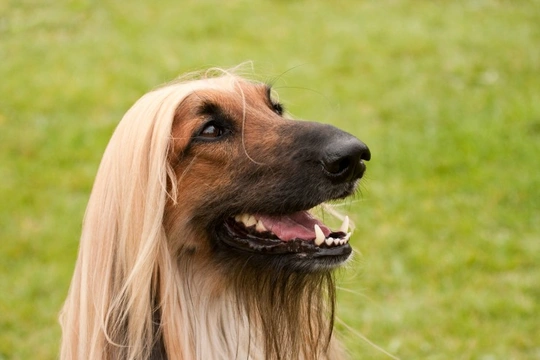
Corneal Dystrophy in Dogs
Corneal Dystrophy is a condition that affects some breeds more than others. It is an inherited disorder that gets progressively worse over time and it negatively impacts a dog's eyes with both eyes being affected in much the same way. Unfortunately, corneal dystrophy is one of the eye diseases that's most commonly seen in dogs, but it is not linked to any other disorders.
The Types of Corneal Dystrophy
Dogs can suffer from any of three types of corneal dystrophy which are categorised by the location they are found in the eye. These are as follows:
- Epithelial corneal dystrophy - this form of the condition sees cell formation negatively impacted
- Stromal corneal dystrophy - this form of the condition sees a dog's cornea turn cloudy
- Endothelial corneal dystrophy - this form of the condition see the cell found in the lining of a dog's cornea being negatively impacted
Symptoms to Watch Out For
Should a dog develop epithelial corneal dystrophy they may well display the following signs of there being something wrong:
- Corneal spasms
- Grey or white irregular or circular shapes, rings or opacities form in the cornea of a dog's eyes
A dog's vision remains normal and the onset of any symptoms typically start when dogs are anything from six months to six years old. The condition slowly gets progressively worse over time and the breed most at risk of developing the condition is as follows:
- Shetland sheepdogs
- Stromal Corneal Dystrophy
- When dogs suffer from stromal corneal dystrophy, they generally show the following signs of there being something wrong:
- White, grey or silver circular or oval shaped opacities form in their corneas
- Annular opacity (shape of a doughnut)
- Diffuse opacity
The condition starts to develop in young mature dogs and although their vision is not seriously impacted, it could be affected to some degree because of the opacity in their corneas. The breeds that appear to be the most affected by this form of both stromal and epithelial corneal dystrophies include the following:
- Afghan Hound
- Airedale Terrier
- Alaskan Malamute
- American Cocker Spaniel
- Beagle
- Bearded Collie
- Bichon Frise
- Cavalier King Charles Spaniel
- German Shepherd
- Lhasa Apso
- Mastiff
- Miniature Pinscher
- Rough Collie
- Siberian Husky
- Samoyed
- Weimaraner
- Whippet
Endothelial Corneal Dystrophy
Should a dog develop endothelial corneal dystrophy, the signs of there being something wrong are usually as follows:
- A swelling of a dog's cornea - blisters develop on the cornea
This form of the condition generally affects dogs when they are middle-aged and older and it is thought that females are more affected than their male counterparts. With this said, it can affect younger dogs too. As the condition gets progressively worse, a dog's vision becomes impaired. The breeds that are most at risk of developing this form of corneal dystrophy includes the following:
- Boston terrier
- Chihuahua
- Dachshund
- French Bulldog
- King Charles Spaniel
- Pug
It is worth noting that other breeds may well be affected by corneal dystrophy too.
The Causes
In the case of epithelial corneal dystrophy, it is thought to be a degenerative abnormality of a dog's cornea. When dogs suffer from stromal corneal dystrophy, it is what is referred to as an innate abnormality"" of a dog's cornea. Lastly, endothelial corneal dystrophy is a degeneration of the lining of a dog's cornea.
Diagnosing the Problem
A vet would need to know a dog's full medical history and ideally a dog's lineage too which would help when diagnosing the problem and to establish whether there is a genetic link. A vet would carry out an in-depth ophthalmic examination of a dog's eyes and would recommend carrying out the following tests:
- A blood chemical profile
- A complete blood count
- An electrolyte panel
- A urinalysis
- A tonometer - this will determine if any pressure has built up inside a dog's eye and helps rule out other conditions like glaucoma
Vets carry out a test called a slit lamp microscopy which helps them identify what type of corneal dystrophy a dog might have developed in an affected eye. To establish whether an eye has been damaged in any way, they would use a fluorescent stain which shows up abrasions if they have occurred. The stain would also determine whether a dog has developed any corneal ulcers which often develop when dogs suffer from either endothelial or epithelial corneal dystrophy.
Treatment Options
Should it turn out that a dog is suffering from corneal ulcers, a vet would typically prescribe an antibiotic eye treatment to help resolve the problem. If a dog suffers from stromal corneal dystrophy, this is does not typically require any form of treatment. Dogs with endothelial corneal dystrophy can be treated with some vets prescribing contact lenses that cover a dog's eyes or they may recommend carrying out what is referred to as ""flap surgery"" to correct the problem.
Living with a Dog with Corneal Dystrophy
Once a dog develops the condition, their eyes tend to always be cloudy even after they have been successfully treated for corneal dystrophy. With this said, if a dog starts to suffer any sort of pain or discomfort further down the line, it's essential for their condition to be reassessed by the vet and a necessary treatment set in place sooner rather than later. In some dogs, their vision remains good even when they have been diagnosed as suffering from corneal dystrophy.
""



